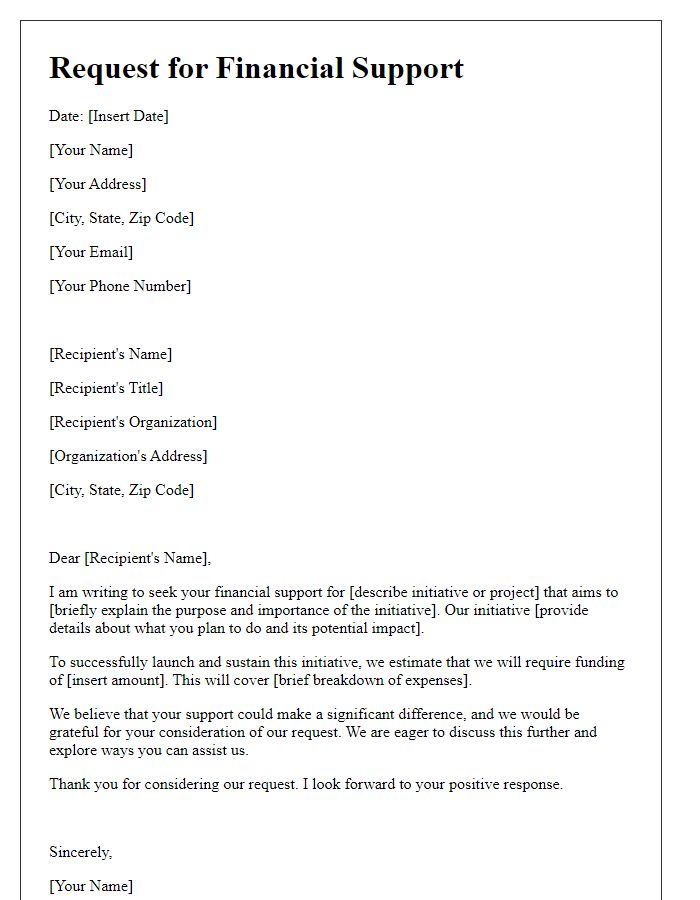Are you ready to unlock the potential of your project with a compelling grant application? Crafting a well-structured letter proposal can be the key to securing the funding you need to bring your ideas to life. In this article, we'll explore essential tips and templates that will help you articulate your vision clearly and effectively. So, let's dive in and discover how to make your grant proposal stand out!

Compelling executive summary
The executive summary serves as a concise introduction to the grant application, providing an overview of the project, its objectives, and the anticipated impact. This section should include key information such as the project's title, the nonprofit organization requesting funding (e.g., "Green Earth Initiative"), funding amount requested (e.g., $150,000), and specific geographical areas impacted (e.g., "the urban neighborhoods of Philadelphia"). Highlight the unique approach being taken, such as innovative community engagement strategies aimed at enhancing environmental sustainability through education and outreach programs. Emphasize the significance of the project, including projected benefits such as reducing carbon footprints by 30% within two years and increasing community participation in green initiatives by over 40%. A strong executive summary not only captures the essence of the proposal but also engages funders by outlining the potential for long-lasting change in the community.
Clear statement of need
The rising prevalence of mental health disorders among adolescents, particularly in urban areas like New York City, has created an urgent need for accessible support services. According to the National Institute of Mental Health, approximately 1 in 5 youth aged 13 to 18 experience a severe mental disorder at some point during their life, contributing to a worrying increase in school dropout rates and substance abuse issues. Local clinics in underserved neighborhoods such as the Bronx show limited capacity, with wait times exceeding three months for appointments. This gap in mental health resources exacerbates the challenges faced by vulnerable populations, hindering their academic success and overall well-being. Implementing a community-based program that focuses on early intervention and support can significantly address this critical issue.
Specific objectives and goals
In the quest to enhance community resilience, this grant application proposes three specific objectives: First, establishment of a resource center in Springfield (a city known for its high unemployment rate of 12%), aimed at providing job training and skill development workshops for at least 200 local residents annually. Second, implementation of a mentorship program linking experienced professionals with emerging entrepreneurs, targeting 50 small business startups over the next two years. Third, development of a sustainable community garden initiative that promotes food security, with a goal of producing 5,000 pounds of fresh produce per season for local food banks. Each objective is designed to address critical socio-economic challenges faced by the Springfield community while fostering personal growth and empowerment.
Detailed project methodology
The project methodology involves a structured approach that includes the phases of planning, execution, and evaluation. Initially, a comprehensive literature review will be conducted, focusing on previous research related to renewable energy systems, particularly solar energy integration in urban settings. This phase will occur over two months, targeting academic journals and case studies from institutions such as the International Renewable Energy Agency (IRENA). Subsequently, data collection will take place across five selected urban areas, emphasizing demographic and geographic factors that influence solar panel adoption. A mixed-method approach will be employed, integrating quantitative surveys of 500 residents with qualitative interviews of local government officials and energy providers. Data analysis will utilize statistical software to assess patterns in adoption rates and barriers faced by residents. Finally, findings will be disseminated through workshops in the project locations and a detailed report shared with stakeholders, including local authorities, aiming to enhance policy-making regarding sustainable energy practices. The project timeline spans from January 2024 to December 2024, with milestones set for each phase to ensure objectives are met effectively.
Comprehensive budget outline
Creating a comprehensive budget outline for a grant application proposal involves detailing expected costs associated with a project, ensuring transparency, and demonstrating prudent financial planning. Key components include personnel costs, covering salaries and benefits for team members; operational expenses, such as rent or utilities for the project base; equipment costs, including specific items like computers or laboratory tools; supplies, which may consist of materials necessary for project implementation; and travel expenses for fieldwork or conferences related to the project. Additional items like indirect costs or administrative overhead should also be included to provide a full picture of projected expenditures. Each category should specify estimated amounts, timelines for spending, and justifications for the expenses to enhance clarity and increase the likelihood of funding approval.













Comments